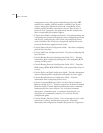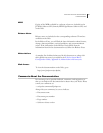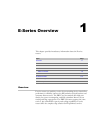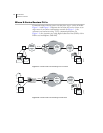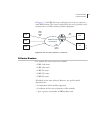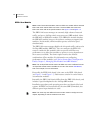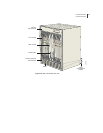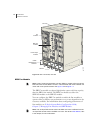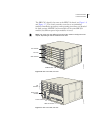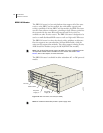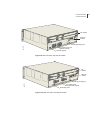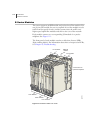
CHAPTER 1
E-Series Overview
1-4
ERX-14xx Models
Note: In the E-series documentation, the term ERX-14xx models refers to both the
ERX-1440 router and the ERX-1410 router. The terms ERX-1440 router and
ERX-1410 router refer to the specific models. See Figure 1-4 and Figure 1-5.
The ERX-1440 router manages an extremely high volume of network
traffic, and uses a 40-Gbps switch route processor (SRP) module, either
the SRP-40G or SRP-40G+ module. (The SRP-40G+ module obsoletes
the SRP-40G module; however, the software continues to support both
modules.) In this model, all line modules operate at full wire speed
simultaneously.
The ERX-1410 router manages high levels of network traffic, and uses the
10-Gbps SRP module (SRP-10G). You can configure the ERX-1410
router to enable the line modules either to operate at full line rate
performance or to allow line modules to operate at a rate dependent on
the resources available. The former option restricts the allowed
combinations of line modules. For information on configuring
performance of line modules, see E-Series System Basics Configuration
Guide, Chapter 5, Managing Line Modules and SRP Modules.
Note: The 10-Gbps SRP module used in the ERX-310 router is different from the
10-Gbps SRP module used in the ERX-1410 router. See section SRP Module,
later in this chapter, for more information.
Externally, the ERX-1440 chassis is the same as the ERX-1410 chassis
(see Figure 1-4 and Figure 1-5). Both routers contain 14 vertical slots to
accommodate modules.
Internally, the ERX-1440 chassis differs from the ERX-1410 chassis, and
includes a special midplane for the 40-Gbps SRP module.
Installation procedures and operating procedures are identical for both
systems. All ERX-7xx/14xx models use the same SRP I/O module, but
different power input modules are used.
Note: The router may look different from the routers shown in the figures in this
chapter, depending on the line modules in the slots.



